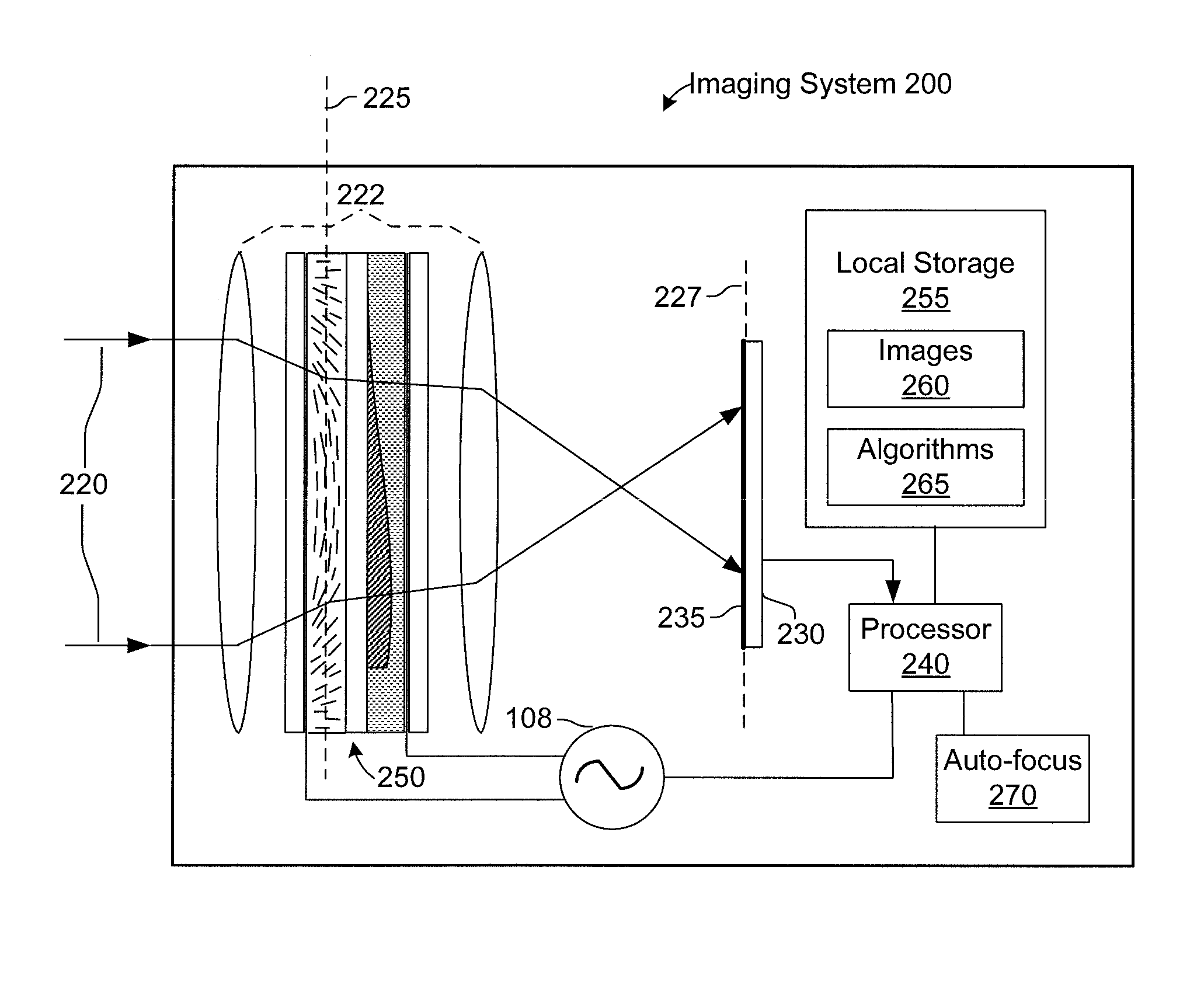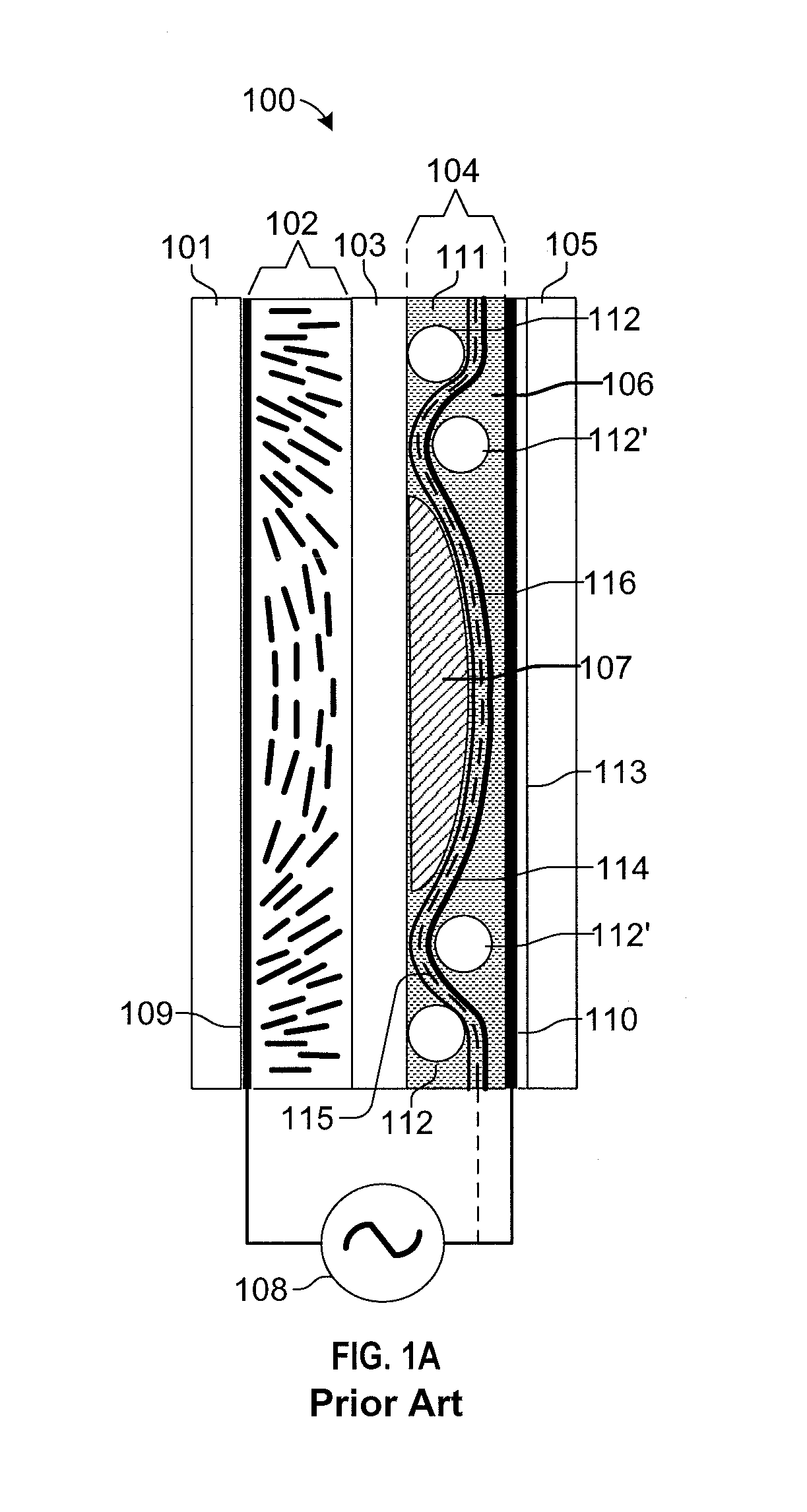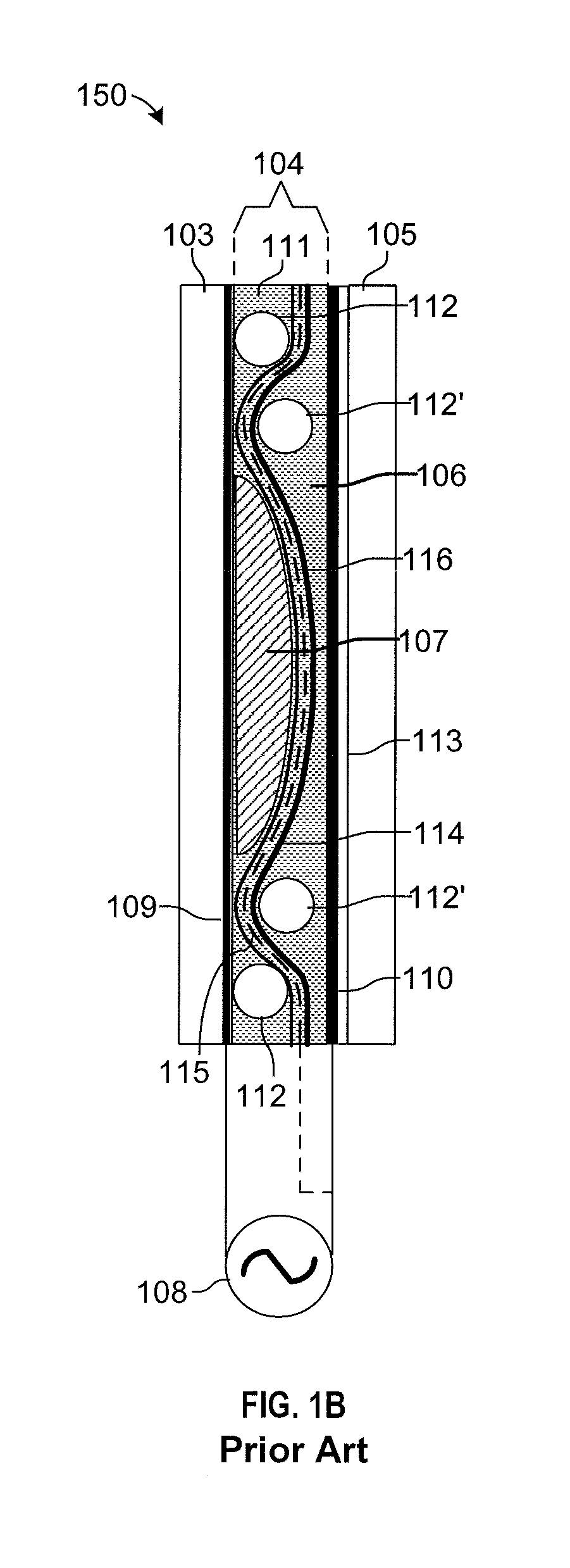Optical device with electrically variable extended depth of field
an optical device and depth of field technology, applied in the field of optical devices with electrically variable extended depth of field, can solve the problems of requiring a large, bulky and relatively expensive element, requiring iris to be large, and not practical in ultra-compact cameras such as cell phone cameras, and achieves the effect of sharp detail
- Summary
- Abstract
- Description
- Claims
- Application Information
AI Technical Summary
Benefits of technology
Problems solved by technology
Method used
Image
Examples
Embodiment Construction
[0015]FIG. 1A is a diagram showing a prior art tunable liquid crystal lens 100. Lens 100 has a liquid crystal (LC) layer 102, and a ‘hidden’ layer 104 with a core lens 107. Layer 104 is optically transparent and induces an electric field in LC layer 102 that is shaped proportionally with respect to the shape of the core lens 107. Core lens 107 is fabricated from an optically transparent material. Focusing of lens 100 is performed by controlling the amplitude and / or the frequency of a signal applied to electrodes 109 / 110 via power source 108.
[0016]LC materials typically present polar molecules that are fairly mobile and, therefore, respond to the presence of an electric field by realigning their poles along the direction of the field. Also because of the polar nature of LC molecules, when they are poled (that is, their molecules are aligned along a preferred axis) they present refractive indices that are dependent on the polarization of light that is transmitted through them. When li...
PUM
| Property | Measurement | Unit |
|---|---|---|
| voltage | aaaaa | aaaaa |
| frequency | aaaaa | aaaaa |
| dielectric constants | aaaaa | aaaaa |
Abstract
Description
Claims
Application Information
 Login to View More
Login to View More - R&D
- Intellectual Property
- Life Sciences
- Materials
- Tech Scout
- Unparalleled Data Quality
- Higher Quality Content
- 60% Fewer Hallucinations
Browse by: Latest US Patents, China's latest patents, Technical Efficacy Thesaurus, Application Domain, Technology Topic, Popular Technical Reports.
© 2025 PatSnap. All rights reserved.Legal|Privacy policy|Modern Slavery Act Transparency Statement|Sitemap|About US| Contact US: help@patsnap.com



